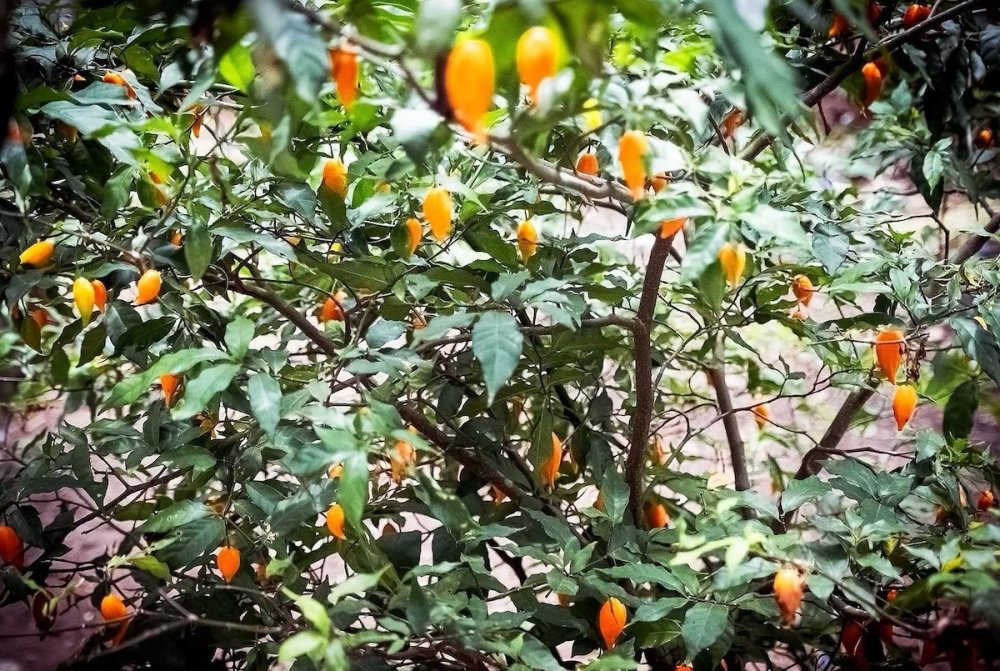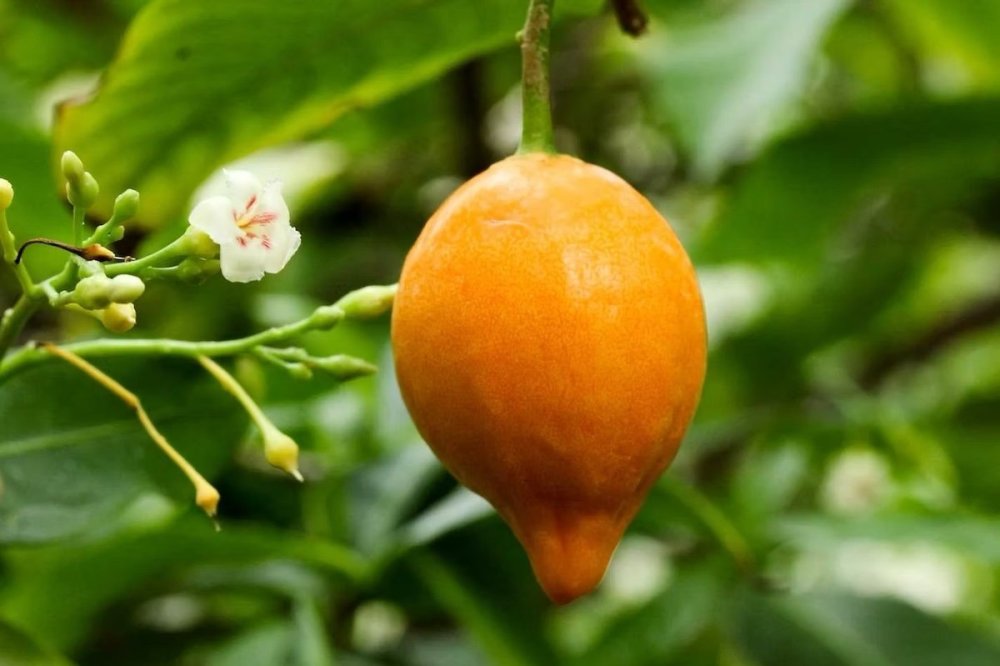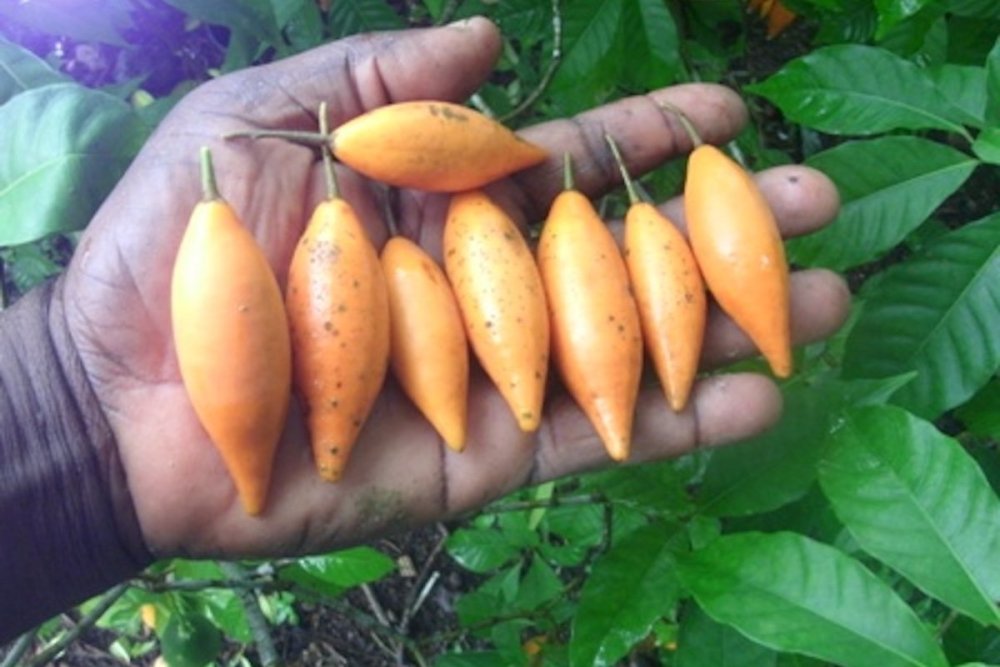Ibogain, from the iboga shrub, is a psychedelic compound used mainly in addiction and trauma therapy treatment. Rhianna Quanstrom explores the benefits and risks of iboga and ibogain, considers iboga vs ayahuasca, and examines the legalities of ibogaine treatment centers around the world.
Iboga, also known as Tabernanthe iboga, is a medicinal shrub native to West Central Africa. It is commonly known for its active constituent, ibogaine.
The iboga tree has ancient roots as a spiritual and healing plant for the Indigenous people of its native region. While it is still used in that context, it has also caught the attention of Western society due to its incredible potential as a treatment for addiction, traumatic brain injuries, and other psychological conditions.
To better understand what Tabernanthe iboga is, we’ll discuss its history, effects and benefits, potential side effects and safety concerns, as well as where to find traditional iboga ceremonies and ibogaine treatment centers. We’ll also take a brief look at iboga vs ayahuasca to understand the similarities and differences of the two medicinal plants.
The History of Iboga
The root bark of the iboga shrub has been used for thousands of years by the Babongo peoples and other Indigenous tribes in West Central Africa, specifically Cameroon, Gabon, and the Republic of the Congo. From the iboga tree came the Bwiti tradition, an oral tradition and animistic spiritual path that holds the belief that there is life and spirit within all things. Bwiti essentially means “The School of Life,” and its focus is on discovering the truth both within and without.
In the Bwiti tradition, Tabernanthe iboga is considered a master teacher, healer, and sacred guide. It is used for seeking higher wisdom and connecting with ancestry, nature, and the Great Spirit. It is used in high doses for ceremonial and initiatory rites of passage.
In the 1900s, the active constituent of iboga’s root bark, ibogaine, was studied as a potential drug for low energy and the cardiovascular system. The isolated extract was introduced as the drug Lambarene and became popular among athletes for its stimulant effect. However, ibogaine products were later taken off the market because of their psychoactive properties. It became a Schedule I controlled substance in the United States and much of Europe.
It wasn't until the 1960s that ibogaine was brought back to the attention of Western medicine after Howard Lotsof, a heroin addict, discovered its seemingly miraculous potential to treat substance abuse. After using it, he was relieved of his addiction and the withdrawal symptoms. He brought this experience to the National Institute on Drug Abuse, which sparked decades of research exploring ibogaine’s anti-addictive properties.
While still a lesser-known substance and plant among Western society, the iboga tree and its active constituent, ibogaine, are becoming more widely recognized as a promising therapy for substance abuse. Today, research is exploring its potential as a medicine not just for addiction, but also traumatic brain injuries, PTSD, depression, anxiety, and childhood trauma.
Effects and Benefits of Iboga
Much of the research on iboga focuses on its active constituent, ibogaine. As such, how an isolated extract interacts with the body is not the same as how the whole plant does. While these studies show promising benefits for mental health and addiction, it’s important to note that traditional use of iboga involves consuming the ground root, which contains numerous other plant constituents besides ibogaine. Thus, it will have slightly (or significantly) different effects on the body – an area with little scientific research to date.
According to the National Library of Medicine (NIH), “The mechanisms by which ibogaine exerts its psychoactive effects in the brain are only poorly understood, which is attributable to the alkaloid’s complex pharmacology.”
“Iboga, also known as Tabernanthe iboga, is a medicinal shrub native to West Central Africa. It is commonly known for its active constituent, ibogaine.”
Nevertheless, studies show that it affects several neurotransmitters in the central nervous system, including opioid, sigma, glutamate, and nicotinic receptors, as well as serotonin transporters. It also affects dopamine release and increases GDNF and BDNF, which are brain growth proteins.
These receptors are related to the neural pathways associated with addiction and withdrawal; as such, ibogaine can help “reset” or disrupt these signals in the brain. Because it also affects dopamine release and increases brain growth proteins, it inhances neuroplasticity, which is the brain's ability to form new neural pathways. It does this in specific parts of the brain – the VTA, nucleus accumbens, and the prefrontal cortex (PFC) – that are related to the brain’s reward system (VTA), the processing of pleasure signals and cravings (nucleus accumbens), and decision-making and impulse control (PFC).
Essentially, ibogaine targets numerous neurotransmitters, proteins, and regions of the brain associated with addiction, belief patterns, and trauma. Because it provides such a strong “reset,” it can dissolve addictive patterns and ease withdrawal symptoms within a single treatment.
Along with substance abuse, ibogaine is shown to effectively treat traumatic brain injuries. According to Stanford Medicine, “[ibogaine] safely and effectively reduces PTSD, anxiety and depression, and improves functioning in veterans with TBI.”

Ibogaine, the active constituent of iboga, is found in the shrub's bark
Research shows that ibogaine helps increase a brain wave known as theta rhythms and reduces activity in the cortex. The article states, “Stronger theta rhythms may encourage neuroplasticity and cognitive flexibility, while less complex cortical activity may lower the heightened stress response seen in PTSD.”
These are some of the most astounding benefits of ibogaine. However, there are many other potential benefits to experiencing an ibogaine journey. Let us not forget that iboga/ibogaine is a psychedelic medicine with spiritual significance. Any psychedelic “trip” will open one’s mind to “the other side,” leading to spiritual awakening and expanded consciousness.
MORE LIKE THIS:
- What is Huachuma, the San Pedro Cactus?
- Microdosing 101
- What is the Peyote Cactus and is it Legal?
- What Science Says About Microdosing Magic Mushrooms
Iboga is considered one of the most intense psychedelic experiences because it lasts for about 24 to 48 hours, with a heightened visual experience that can last anywhere from 5 to 14 hours. The second half of the journey is more reflective, often with heightened mental clarity, peace, and energy. This can benefit anyone who feels called to take this medicine, as it leads you on an immensely healing and awakening journey where you connect with a much deeper wisdom within.
Many people report addressing childhood traumas, purging old fears and wounds, communicating with ancestors and loved ones who have passed on, and experiencing profound revelations about the meaning of existence.
Here are some quotes from people sharing their firsthand experience of taking iboga/ibogaine:
“My body feels washed in a cleansing energetic blanket that completely removes the physical discomfort I’m feeling after 36 hours without heroin. In my mind there’s a vision like I’m being launched through a worm-hole which spits me out in what looks like outer space. I’m having a very rapid succession of incredibly insightful thoughts and ideas, and I’m broadly contemplating various abstract concepts such as relativity theory, evolution, and photosynthesis.”
- Kevin Franciotti, A New Perspective: My Experience with Ibogain Treatment
“Soon the trip starts: images of the solar system punctuated by clips of my younger self laughing, then a bizarre internal reel made up of Jesus Christ, an alien and an image of a bush – seemingly the one from which the medicine derived. These eventually give way to a pounding narrative of negative thoughts known as a “mind-purge”.
- Mattha Busby, I Tried Ibogaine, the Psychedelic Anti-Addiction Drug
“The highest spiritual truth is the gift of life, the medicine tells me. The Bwiti have only one prayer, I learned during fire talk: 'thank you for this day'. And so, gratitude washes over me as it fills every inch of my body with brilliant white light. At last, I find gratitude – real gratitude – for all the struggle. Struggle which has granted me this miracle of a life, which I now understand is a free life, thanks to the experience the medicine gifted me: feeling safe and free in the now. Just being is the gift, I understand. The beauty of the present moment and experiencing it with loving awareness through our senses – that is the meaning of life.”
- Julia Christina, The Journey
Potential Side Effects of Iboga
Iboga/ibogaine is a powerful substance and can have adverse, sometimes fatal, effects. There have been a few deaths reported with ibogaine due to cardiac arrhythmia, or irregular heartbeat.
According to an Ibogaine fact sheet, “The majority of the ibogaine-related deaths occurred in unsafe settings that did not have access to proper medical monitoring or cardiac life support capabilities, including unregulated ibogaine treatment facilities outside of the United States. Most of the individuals who died were at an increased risk of adverse events due to the presence of heart disease, a history of taking certain heart medications, and polydrug use. Furthermore, some of the individuals were using impure or adulterated ibogaine products.”
“In the Bwiti tradition, Tabernanthe iboga is considered a master teacher, healer, and sacred guide. It is used for seeking higher wisdom and connecting with ancestry, nature, and the Great Spirit.”
It is unclear whether the whole-plant extract carries the same potential for severe side effects. However, because the iboga root contains 80% ibogaine, it should still be used with caution and only in safe, medically monitored environments.
These fatal outcomes are rare. The most common side effects include:
- Nausea
- Dizziness
- Vomiting
-
Tremors
Less commonly, it can cause mania, seizures, and psychosis. Considering this, it’s important to speak with your doctor and have a full health evaluation before consuming iboga or ibogaine. Neither of these substances should be taken if you have a history of heart problems or are on heart medication.
Most importantly, iboga and ibogaine should only be consumed in safe, reputable, and medically supervised ibogaine retreat centers.
Iboga Ceremonies and Retreats
In the United States, iboga and ibogaine are classified as Schedule I controlled substance at the federal level. However, regulations can vary state to state. For example, in the state of Colorado, ibogaine is recognized as a “natural medicine,” allowing for its use in licensed healing centers as well as for personal use and cultivation. Other states are introducing legislation to shift their legal status due to its therapeutic potential. Still, for most people in the U.S., attending an ibogaine retreat center requires traveling abroad.
In the UK, ibogaine is illegal to use or possess, and legal restrictions vary across Europe. Currently, ibogaine treatment centers are most commonly found in the following countries:
- Australia
- Canada
- Costa Rica
- Mexico
- Netherlands
- New Zealand
Additionally, it is legal in its native countries, such as Gabon and Cameroon, where traditional ceremonies are still practiced, and a few retreat centers are open to the public.
Iboga vs Ayahuasca
Both iboga and ayahuasca are powerful psychedelic plant medicines with deep cultural and spiritual significance to the Indigenous peoples of the regions where they grow. As such, both should be approached with respect, reverence, clear intention, and caution.
While each medicine produces profound visionary states, iboga is generally considered more intense and longer-lasting than ayahuasca. They are both rooted in ceremony and tradition, and should be used in a safe container with trained facilitators.
RELATED:
- Psychedelic Integration: Honoring the Journey Beyond the Experience
- What is Ego Death? Meaning, Symptoms, and Causes
- Exploring Shamanic Healing: What to Expect
Interestingly, these medicines both have an affinity for breaking addiction and forming new neural pathways. However, they are different in how they interact with the body and the overall psychedelic experience they produce. As discussed, the main active constituent of iboga is ibogaine, while ayahuasca’s is DMT.
If you’re drawn to exploring one of these medicines, it’s essential to do thorough research and listen to your intuition. Often, the right medicine for you at this time will make itself known.
Takeaway: Iboga and ibogaine
The iboga tree is a sacred psychedelic plant medicine at the heart of the Bwiti tradition of West-Central Africa. Today, it is also used by people around the world seeking spiritual awakening and healing from addiction and trauma.
Its active constituent, ibogaine, is increasingly recognized as a promising therapeutic substance in modern Western medicine. This will pave the way for further research and clinical trials for its treatment of substance abuse and mental health conditions. Whether approached for healing, spiritual insight, or addiction treatment, iboga will have a profound and life-long impact on all who seek its guidance. ●
happiness.com | The fine art of being: learn, practise, share
Are you a happiness.com member yet? Sign up for free now to:
■ enjoy our happiness magazine with practical life tips
■ share and support in our happiness forum
Written by Rhianna Quanstrom
 Rhianna Quanstrom is a freelance writer, herbalist, and spiritual seeker with a passion for nature-based healing and sacred wisdom. Her writing draws from years of experience with meditation, shamanic practices, plant medicine, dream work, and the reclamation of the Sacred Feminine. Discover more of her writing and poetry on her Mystic Love Substack.
Rhianna Quanstrom is a freelance writer, herbalist, and spiritual seeker with a passion for nature-based healing and sacred wisdom. Her writing draws from years of experience with meditation, shamanic practices, plant medicine, dream work, and the reclamation of the Sacred Feminine. Discover more of her writing and poetry on her Mystic Love Substack.





Join the conversation
You are posting as a guest. If you have an account, sign in now to post with your account.
There are no comments to display.